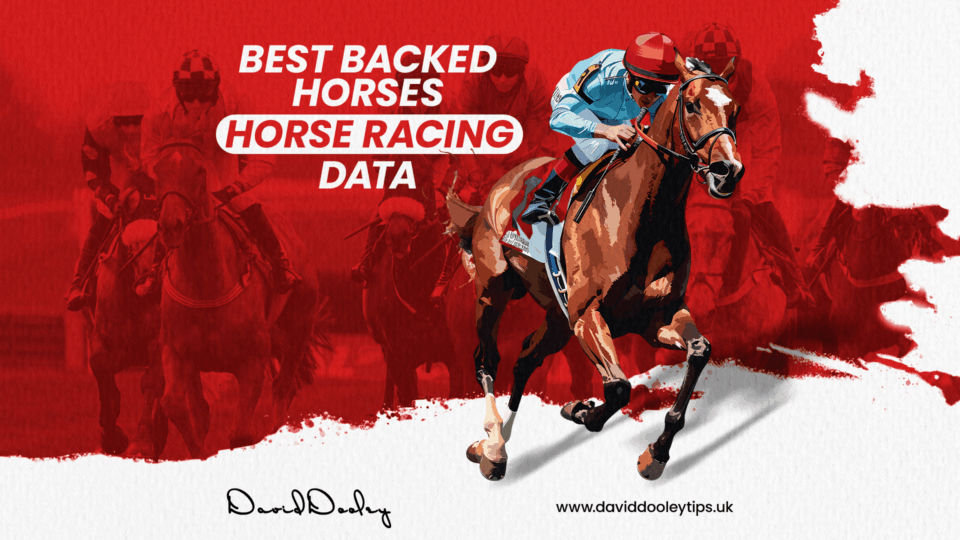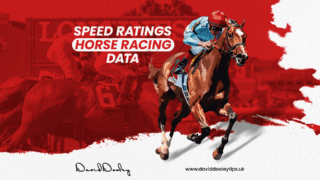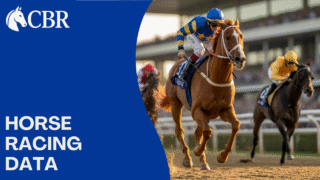Best backed horses are those receiving significant betting support, which causes their odds to shorten noticeably. This indicates growing confidence from those using betting sites and reflects recent form, trainer influence, or insider knowledge. Tracking these market movements can help you identify runners with strong potential for a race.
Data on best backed horses comes from comparing opening prices to current odds, as well as analysing betting patterns across bookmakers. Since market shifts often align with horses in good form or linked to successful trainers, using this information alongside race conditions can improve your betting decisions. Staying informed on these trends provides a strategic edge rather than relying on guesswork.
You will find that familiarising yourself with best backed horses involves watching live odds movements and combining that with horse form data. This means that monitoring market movers closely can highlight changes that predict strong performances, letting you make bets with more confidence and insight.
Contents
- 1 What Are Best Backed Horses in Horse Racing Data?
- 2 How Is Market Movement Tracked and Measured?
- 3 What Signals Do Market Movers and Steamers Offer?
- 4 Why Should Punters Care About the Best Backed Horses?
- 5 How to Access and Analyse Horse Racing Data for Market Movers
- 6 Betting Strategies Using Best Backed Horses Data
What Are Best Backed Horses in Horse Racing Data?
Understanding the nature of best backed horses requires recognising the distinct signals that come from shifting betting patterns and market reactions. These horses attract heavy financial support, indicating strong confidence from punters and relevant parties. You need to grasp how these indicators differ from simple favourites to make better data-driven decisions.
Definition and Explanation
Best backed horses are runners that receive a substantial volume of bets, resulting in their odds shortening significantly. This increased backing often reflects growing confidence from bettors and bookmakers, who adjust prices to balance liability.
These horses are also known as market movers or steamers because their odds move noticeably in response to strong betting activity. Such shifts show that informed parties might believe these horses have an improved chance of success compared to initial expectations.
The movement in odds results from pooled betting data and insight into factors like recent form, jockey success, or trainer reputation. As a result, best backed horses stand out in horse racing data because they command heightened market attention.
Key Characteristics of Best Backed Horses
Best backed horses display clear traits in betting markets, which include:
- Shortened odds: Their probability of winning, as implied by the market, increases when large bets are placed.
- Significant money flow: Large volumes of bets alter initial market prices.
- Market confidence: They are often linked to well-performing trainers or jockeys.
- Recent performance: Horses with strong results attract more backing.
- Late market support: Odds frequently shorten close to race time, highlighting growing confidence.
These characteristics mean that backed horses are not just popular but are seen as aligning with favourable race conditions or insider knowledge. Tracking these changes helps you identify runners worth considering for your bets.
How Best Backed Horses Differ from Market Favourites
Market favourites are horses with the lowest odds at the time a bet is placed, reflecting the general expectation of winning. However, best backed horses are identified by dynamic market changes rather than static odds.
While a favourite can start as best backed, the two terms differ because favourites do not always experience significant betting momentum. Best backed horses are specifically those with odds shortening due to sudden, large bets, defining them as market movers or steamers.
This means a horse can be a favourite without being best backed if there is little recent market activity. Conversely, a backed horse might rise from longer odds to become a strong contender based on betting trends. Understanding this distinction is crucial for interpreting horse racing data accurately.
How Is Market Movement Tracked and Measured?
Market movement is monitored through changes in horse odds, influenced by betting activity across various bookmakers and exchanges. The data reflects how backing or laying affects price shifts, revealing which horses attract more support and how much volume they command in the betting market.
Understanding Price Movement and Odds Fluctuations
Price movement shows how a horse’s odds change from opening levels to race time based on backing trends. When many bets target a horse, its odds shorten, signalling increased confidence from those depositing money. Conversely, if bets move away, the odds lengthen, indicating declining support.
You track these movements by comparing odds at multiple timestamps, often from morning prices through to just before the race. Rapid shortening or lengthening within minutes highlights significant market moves, which you can interpret as steamers (well backed) or drifters (losing favour).
Role of Fixed Odds Bookmakers and Betting Exchanges
Fixed odds bookmakers set initial prices but adjust them based on betting patterns to balance risk. Their odds reflect the volume of money placed, so the more you back a horse, the more likely its price will shorten. These changes provide early signals of market confidence.
Betting exchanges like Betfair operate differently, matching bets directly between users. Odds on exchanges shift dynamically with each matched bet, offering real-time insight into backing and laying pressure. This makes exchanges a vital tool for tracking live price movements and spotting market trends.
Market Share and Bet Volume Indicators
Market share measures the proportion of total bets on a horse relative to others, which you can use to assess popularity. A growing market share means more backers favour that horse, causing price movements and revealing genuine market sentiment.
Bet volume shows the aggregate money placed, influencing how much odds shift. Large volumes create strong signals, so significant price movement indicates high backing activity. Together, tracking market share and bet volume helps you understand which horses are genuinely well supported and where market confidence lies.
What Signals Do Market Movers and Steamers Offer?
Market movers and steamers reveal how betting confidence shifts shortly before a horse race. They indicate which horses are gaining strong support or losing favour, providing clues about likely race outcomes. Understanding these signals helps you evaluate market sentiment and improve your betting decisions.
Identifying Genuine Confidence in the Market
When a horse becomes a steamer, its odds shorten significantly due to increased backing from bettors. This often means informed bettors or large sums are placed, signalling potential value. You should look for steamers whose odds drop steadily rather than abruptly, as this suggests consistent confidence.
A genuine market move also considers changes in the market share and support across multiple bookmakers. If several bookmakers show shortened odds, this confirms the backing is widespread, not isolated. Additionally, watch for horses with last recorded best prices coming from reputable bookmakers, as they can be more reliable indicators.
Fast odds shifts can also result from market manipulation or low liquidity. Therefore, you must combine steamers data with race form and other statistics to validate genuine confidence behind a horse.
Spotting Top Drifters and False Signals
Top drifters show increasing odds, reflecting decreased betting support and lowering their chances according to the market. This can happen when insiders doubt the horse’s condition or if there’s a late negative update. Drifting odds warn you to be cautious, especially if the change occurs close to race time.
However, not all drifters represent genuine loss of confidence. Some odds lengthen due to non-runners or changes in the overall market composition. In such cases, a weak horse can appear to drift sharply while others shorten, which can mislead your judgment.
To avoid false signals, check if drifts coincide with track conditions, jockey changes, or late withdrawals. Also, balance drifter data against live odds movements and betting volumes to distinguish real declines from market noise.
Why Should Punters Care About the Best Backed Horses?
Understanding which horses attract strong betting support can influence your decisions and help identify trends that may affect the race outcome. The flow of money behind certain runners often reflects insider knowledge or sharp shifts in confidence that impact fixed odds bookmakers’ prices.
Using Backed Horses Data to Inform Betting Decisions
The best backed horses represent those gaining significant wager activity during the day, which usually causes their odds to shorten. This price movement can signal sharper insights from experienced punters or changes in race conditions not immediately obvious.
Tracking these horses allows you to spot momentum that betting markets reveal in real time. Since fixed odds bookmakers adjust prices based on betting volume, following well-backed horses can help you find value or confirm selections.
However, backing the most popular horse isn’t always ideal because odds often become less favourable. Using this data means you can time your bets, possibly placing early wagers before price contractions or exploring in-play betting for better odds.
Common Patterns and Insider Factors
Heavy betting on specific horses often coincides with insider knowledge or late-breaking information such as jockey changes, rider fitness, or ground conditions. These factors directly shift punters’ confidence and cause price shifts.
Punters frequently observe that market moves before races reflect non-public insights, so studying best backed horses helps you gauge the hidden variables affecting race outcomes. This forms a practical edge in a world where form alone may not reveal the entire story.
Some patterns also show that overly backed favourites can be vulnerable if the money is driven by hype rather than data, so awareness of this dynamic helps you avoid blindly following the crowd. Being alert to these elements lets you balance intuition with data-driven judgement.
How to Access and Analyse Horse Racing Data for Market Movers
Accessing reliable horse racing data and analysing price movements require the use of specialised tools and a clear approach to interpreting the information. You need to focus on sources that track odds changes closely, especially from betting exchanges and bookmakers. Understanding the regional focus and cross-referencing data enhances your ability to identify market movers effectively.
Popular Resources and Tools
Several websites and services provide comprehensive horse racing data, including live price updates and market mover identification. Services like JustStartHere offer detailed price movement charts for UK and Irish races, showing when horses are well backed or drifting. These sites update odds from Betfair and other exchanges regularly, often every minute, which is crucial for tracking late market shifts.
You can use tools that display steamers and drifters clearly with colour coding and star ratings, so you quickly see which horses are gaining or losing support. Many sites combine price movements with expert tips and form data, allowing you to cross-check trends. Mobile compatibility means you can monitor these changes anywhere, including at racecourses or bookmakers.
Irish Horse Racing and UK Focus
Horse racing data sites typically provide extensive coverage of both Irish and UK racing markets because these regions have the highest volume of trading activity. This focus means you’re more likely to find up-to-date and accurate price movements for every race in these territories, reflecting collective punter behaviour and insider knowledge.
Irish racing markets often move differently from UK ones due to smaller pools and distinctive local factors. Access to detailed racecards and ratings for both areas lets you compare horses’ form and market sentiment, which can highlight hidden value. The proximity of these markets means prices often influence each other, so tracking both simultaneously improves your analysis.
Comparing Betfair Market Movers and Bookmaker Data
Betfair market movers reflect betting exchange activity where multiple punters influence prices in real time. These odds can change rapidly due to live market sentiment, offering insights into where sharp money is going. Monitoring this information lets you spot late steamers backed by informed traders.
By contrast, bookmaker prices might move more slowly or be influenced by their risk management strategies rather than punter activity alone. Comparing bookmaker odds with Betfair movements allows you to identify discrepancies that could indicate value bets. Matching significant shortening odds on Betfair against bookmaker prices helps verify genuine market confidence.
Checking both sources regularly gives you a more rounded view of market dynamics, so you can adapt your betting approach based on verified trends rather than isolated price shifts.
Betting Strategies Using Best Backed Horses Data
Using data on best backed horses can enhance your betting approach by helping you decide when to place bets and how to evaluate market moves. Recognising the timing behind odds changes and weighing potential outcomes lets you make informed plays aligned with market sentiment and performance trends.
Timing Your Bets and Following Market Trends
Spotting early odds shortening is crucial for timing your bets effectively. When a horse’s price drops significantly from opening odds, this often signals strong backing from professional bettors or insider confidence. Betting early can lock in better value before the market adjusts further.
You should monitor live odds and market trends closely, especially in the lead-up to races. Patterns of steady market moves can hint at genuine confidence, while sudden fluctuations may indicate last-minute information or shifts in public opinion. Using websites that track market movers in real time helps you stay ahead of these changes.
Focus on horses showing shortening odds combined with favourable trainer or jockey form. These dual indicators reinforce the likelihood that market moves are based on actual performance rather than spurious interest. Timing your bet closer to the market peak could secure the highest potential return before odds compress.
Assessing Risk and Reward from Market Moves
Market moves reflect collective bettor confidence but don’t guarantee a win, so assess the balance between betting value and likelihood carefully. A best backed horse with drastically shortened odds often presents lower payout potential. You must consider whether the reward matches the implied probability.
Analyse how much the odds have shifted to gauge market expectation. A significant price drop means bookmakers expect the horse to perform well, but it also reduces your potential return. Conversely, a smaller odds change might indicate value if you believe the market has underestimated the horse’s chances.
Combine market move data with form, track conditions, and competitor strength to validate backing signals. This comprehensive approach helps you avoid overplaying popular market movers where the payout no longer matches the chance of winning. Ultimately, weighing risk against reward based on market moves sharpens your decision-making in horse racing betting.



